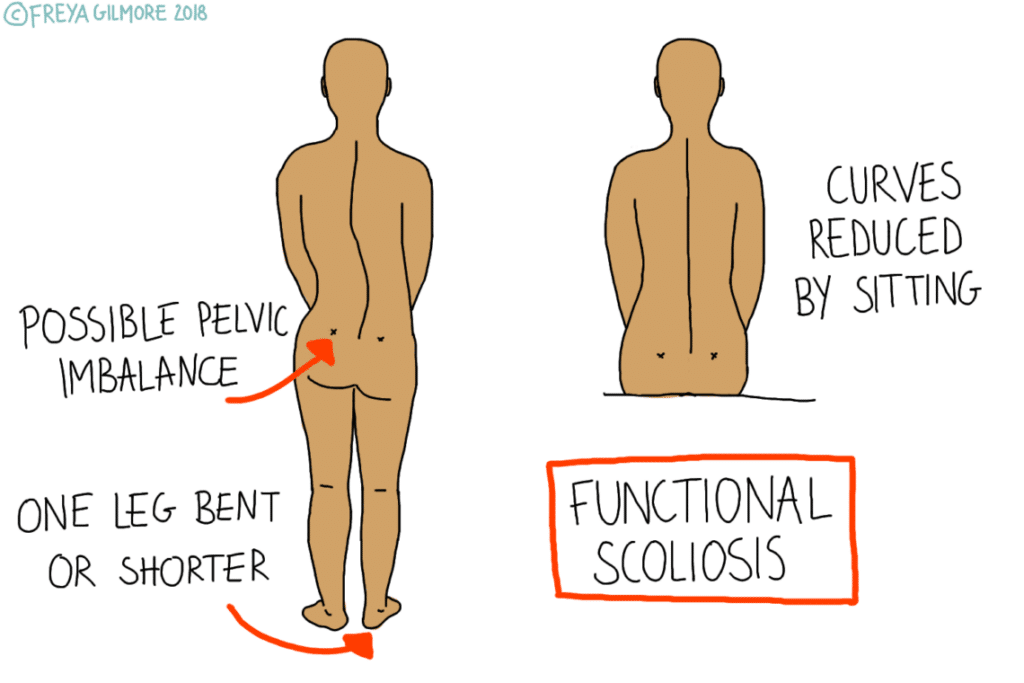

A scoliosis is a lateral curve of the spine: a curve visible from behind. No one is perfectly straight, but sometimes this curve can present problems. If it is only present in certain positions such as sitting, it is called a functional scoliosis. When the curve is there all the time it is called a structural scoliosis.
Initially, this may present with or without pain. In children, parents may be the first to notice things like:
Functional scolioses are generally not problematic and can be managed with lifestyle changes. For example if someone only has a scoliosis when sitting with their wallet in the back pocket they can be advised that this is the cause.

There may also be habitual factors at play. If you tend to stand with one leg bent, the body will aim to correct this imbalance before it reaches your head. If you wear a heavy shoulder bag, you may develop a temporary concavity on that side.
These are not problems in themselves unless they cause discomfort, or stop resolving when the position is corrected.
Structural scolioses tend to form during childhood or adolescence. Often the cause is unknown, so it is referred to as an idiopathic scoliosis. If this is picked up before a person finishes growing they may be referred for treatment.

Ageing spines also develop these curves- most elderly people have some sort of curve.
In contrast to functional curves, this type of scoliosis can come down to the structure of the bones. In other cases, neurology plays a role. Scoliosis can follow trauma or be caused by conditions such as cerebral palsy. Neuromuscular scoliosis requires medical intervention.
In mild cases osteopathic management may help. However for more severe cases the patient may be referred for a brace or surgery. Severity of the angle can be measured using an X-ray of the spine.
Although osteopaths cannot change the curve in adults with a structural scoliosis, we can work to relieve symptoms. The muscles on the concave side of the curve will be shortened and tighter and the opposite will be true on the convex side. The body is generally good at adapting to these changes but if they are uncomfortable we can work to balance.
In reality, the curve is unlikely to be purely lateral. Rotation through the mid and upper back is common, and can cause compression through the ribs on one side. Osteopathy can help work on the muscles between the ribs, as well as general breathing mechanics. We can also suggest exercises to continue at home.
If you suffer the effects of scoliosis, book in today and see what we can do.